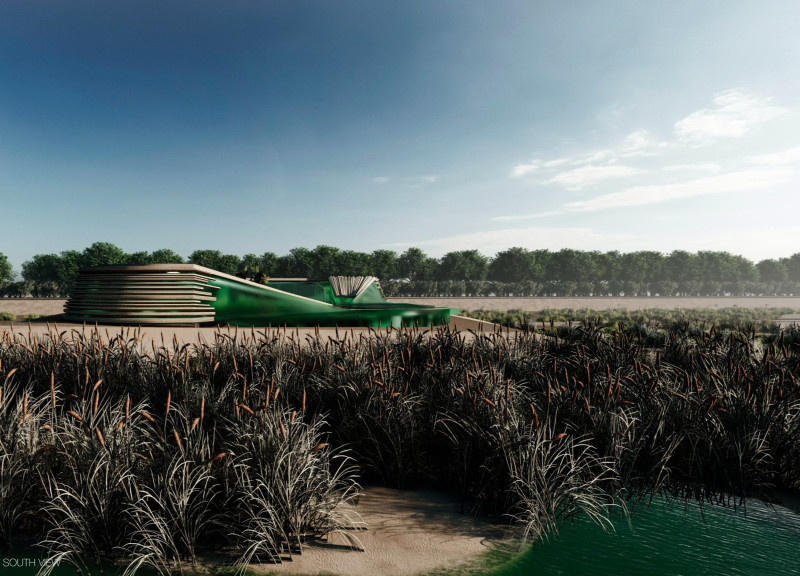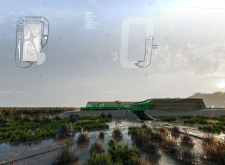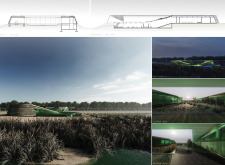5 key facts about this project
The OASIS Al Wathba Visitor Center is located in the Al Wathba wetlands of Abu Dhabi, designed to connect with its natural surroundings. This facility focuses on education and engagement, aiming to raise awareness of the area's diverse ecology. The central idea behind the design is inspired by the concept of mimicry, where the building reflects the characteristics of an oasis, utilizing water as the key organizing element of the structure.
Design Integration
The building consists of two main parts: a glazed volume that houses the primary functions and an outer layer that mimics natural geological formations shaped by water. The glazed portion acts as a Trombe wall, absorbing and storing heat from the sun, which contributes to energy efficiency. The earthy outer coating reduces solar gain and visually blends the structure with the landscape, making it a natural part of the environment.
Spatial Relationships
The design promotes a strong relationship between the building and the surrounding landscape, featuring an inner courtyard filled with native plants. This encourages visitors to interact with the local ecosystem. The layout creates clear visual connections, allowing people inside to experience both enclosed spaces and open views of the outside. A terrace, partially hidden, offers a direct interaction with nature, reinforcing the connection between the built form and the environment.
Climate Response
Bioclimatic principles are central to the design, addressing the specific climate challenges of the region. The orientation of the building is carefully planned to take advantage of natural airflow, utilizing prevailing winds for ventilation. Air moves through a circulation network that cools as it passes over a central water feature, contributing to indoor comfort and supporting a sustainable approach to design.
The OASIS Al Wathba Visitor Center highlights the importance of preserving the ecological balance of the Al Wathba wetlands. The design features thoughtful elements, such as the way the sunlight interacts with the glazed surfaces throughout the day, encouraging visitors to reflect on the relationship between human-made structures and the natural world.
























































